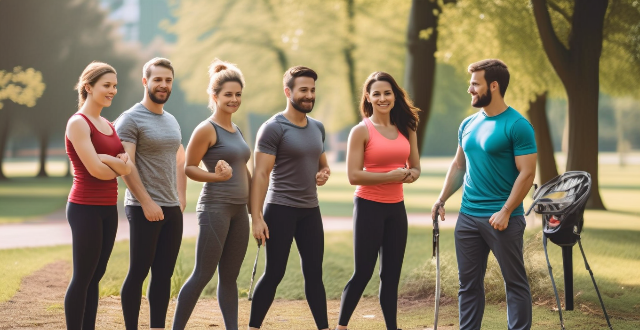High-intensity workouts in a group setting pose certain risks for seniors, including cardiovascular strain, musculoskeletal stress, overexertion and fatigue, and social and psychological factors. To minimize these risks, seniors should consult with a healthcare professional, start slowly and gradually increase intensity, focus on low-impact activities, stay hydrated and monitor temperature, wear appropriate footwear and clothing, listen to their body, and seek supervision from qualified instructors.

Risks Associated with High-Intensity Workouts for Seniors in a Group Setting
High-intensity workouts, while beneficial for many individuals, can pose certain risks for seniors, especially when performed in a group setting. Here are some of the potential risks:
Cardiovascular Strain
- Increased Heart Rate: High-intensity exercises can significantly increase the heart rate, which may be risky for seniors with underlying cardiovascular conditions.
- Elevated Blood Pressure: Such workouts can also lead to a temporary rise in blood pressure, which may not be suitable for seniors with hypertension or other related issues.
Musculoskeletal Stress
- Joint Pain and Injury: High-impact activities involved in high-intensity workouts can put additional stress on joints, increasing the risk of pain and injury, particularly for seniors who may already have arthritis or other joint problems.
- Muscle Strain and Tears: The intense nature of these workouts can also lead to muscle strains or tears, especially if seniors are not accustomed to such activities or do not have adequate strength and flexibility.
Overexertion and Fatigue
- Excessive Fatigue: High-intensity workouts can cause excessive fatigue, which may be challenging for seniors to recover from, especially if they have limited energy reserves or pre-existing health conditions.
- Dehydration and Heat Exhaustion: Intense physical activity can lead to dehydration and heat exhaustion, which can be more severe in seniors due to their reduced ability to regulate body temperature and maintain fluid balance.
Social and Psychological Factors
- Pressure to Keep Up: In a group setting, there may be an inherent pressure for seniors to keep up with others, potentially leading them to push themselves beyond their safe limits.
- Embarrassment or Injury from Falling: The risk of falling during high-intensity exercises is higher for seniors, which can result in injuries and may also cause embarrassment or loss of confidence in a group setting.
Tips for Safe High-Intensity Workouts for Seniors
To minimize these risks, seniors should consider the following tips before engaging in high-intensity workouts in a group setting:
1. Consult with a Healthcare Professional: Before starting any new exercise program, seniors should consult with their healthcare provider to ensure that the chosen activities are safe for their individual health status.
2. Start Slowly and Gradually Increase Intensity: It's essential to start with low-intensity exercises and gradually increase the intensity over time to allow the body to adapt safely.
3. Focus on Low-Impact Activities: Opt for low-impact exercises like walking, swimming, or cycling instead of high-impact activities like running or jumping.
4. Stay Hydrated and Monitor Temperature: Drink plenty of water before, during, and after exercising, and avoid working out in extreme temperatures.
5. Wear Appropriate Footwear and Clothing: Ensure that footwear provides adequate support and cushioning, and wear comfortable, loose-fitting clothing suitable for the activity.
6. Listen to Your Body: Pay attention to how your body feels during the workout, and stop immediately if you experience any discomfort, pain, or dizziness.
7. Seek Supervision from Qualified Instructors: In a group setting, make sure that instructors are knowledgeable about working with seniors and can provide modifications as needed.
By taking these precautions, seniors can enjoy the benefits of high-intensity workouts while minimizing the associated risks.